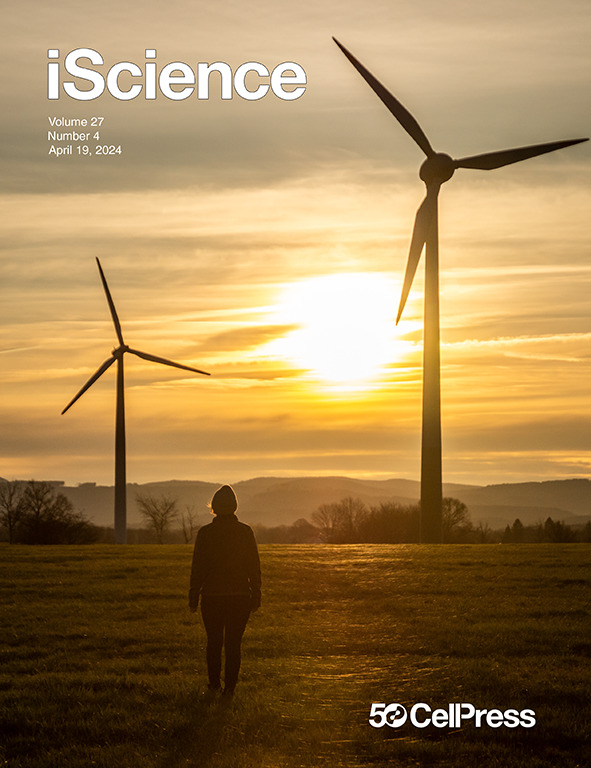线虫发育过程中巢式基因对宿主基因的诱导
IF 4.1
2区 综合性期刊
Q1 MULTIDISCIPLINARY SCIENCES
引用次数: 0
摘要
胚胎发育依赖于严格控制的基因表达。在这项研究中,我们分析了秀丽隐杆线虫发育过程中惊人的基因组拓扑结构的转录效应,即相反的巢状结构,其中一个基因位于宿主基因的相反方向的内含子中。利用CRISPR基因组工程和单分子FISH,我们表征了参与神经元规范的转录因子ceh-10与其宿主DNA修复酶polq-1之间的调控相互作用,表明巢状基因诱导神经元中宿主短版本的转录。将我们的分析扩展到数百个相反巢状结构的蛋白质编码基因,并使用覆盖秀丽隐杆线虫胚胎发生的单细胞RNA-seq数据,我们观察到巢状基因和宿主基因之间的共表达相对普遍,特别是在巢状基因阳性的细胞中。我们的研究阐明了嵌套基因的存在如何影响宿主的表达。本文章由计算机程序翻译,如有差异,请以英文原文为准。

Induction of host genes by nested genes during C. elegans development
Embryonic development relies on tightly controlled gene expression. In this study, we analyzed the transcriptional effect during C. elegans development of a striking genomic topology, the opposite nested configuration, where a gene is located in an intron of a host gene in the opposite direction. Using CRISPR genome engineering and single molecule FISH, we characterized the regulatory interactions between ceh-10, a transcription factor involved in neuronal specification, and its host polq-1, a DNA repair enzyme, showing that the nested gene induces transcription of a short version of its host in neurons. Extending our analysis to the hundreds of protein coding genes in opposite nested configuration and using single-cell RNA-seq data covering C. elegans embryogenesis, we observed that coexpression between nested and host genes is relatively common especially in cells positive for the nested gene. Our study illustrates how the presence of a nested gene can influence expression of its host.
求助全文
通过发布文献求助,成功后即可免费获取论文全文。
去求助
来源期刊

iScience
Multidisciplinary-Multidisciplinary
CiteScore
7.20
自引率
1.70%
发文量
1972
审稿时长
6 weeks
期刊介绍:
Science has many big remaining questions. To address them, we will need to work collaboratively and across disciplines. The goal of iScience is to help fuel that type of interdisciplinary thinking. iScience is a new open-access journal from Cell Press that provides a platform for original research in the life, physical, and earth sciences. The primary criterion for publication in iScience is a significant contribution to a relevant field combined with robust results and underlying methodology. The advances appearing in iScience include both fundamental and applied investigations across this interdisciplinary range of topic areas. To support transparency in scientific investigation, we are happy to consider replication studies and papers that describe negative results.
We know you want your work to be published quickly and to be widely visible within your community and beyond. With the strong international reputation of Cell Press behind it, publication in iScience will help your work garner the attention and recognition it merits. Like all Cell Press journals, iScience prioritizes rapid publication. Our editorial team pays special attention to high-quality author service and to efficient, clear-cut decisions based on the information available within the manuscript. iScience taps into the expertise across Cell Press journals and selected partners to inform our editorial decisions and help publish your science in a timely and seamless way.
 求助内容:
求助内容: 应助结果提醒方式:
应助结果提醒方式:


